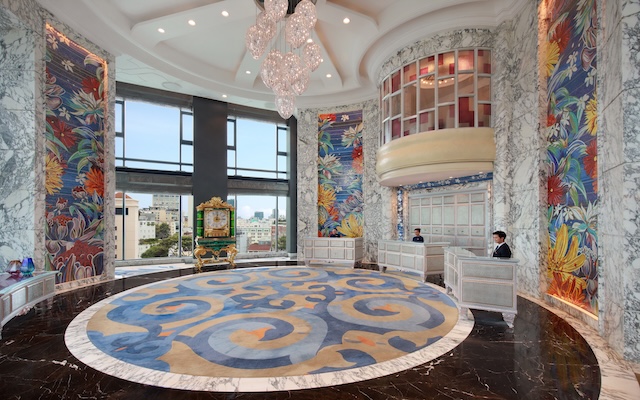No stranger to this post, Thailand’s minister of tourism and sports Weerasak Kowsurat tells why the country’s tourism sector needs to stop its addiction to increasing visitor arrivals but instead place serious emphasis on achieving equity for all stakeholders
You were the tourism minister in 2008 and again assumed the role in November 2017. What’s the biggest change that you’ve seen in these 10 years?
The size of the global tourism market is different. In 2008, LCCs were a new phenomenon and now they’ve grown much faster in this region than any other parts of the world. At that time international tourist arrivals into Thailand were about 14 million and now I’m working with an arrival size about half of the country’s population (69 million).
We have come so far this time to require a good look into the supply side, as well as the carrying capacities of destinations, cities and the country, and our manpower and facilities.
We also need to look at deregulation and to implement and upkeep safety measures. We have all the good word of the law, but when you go into the field there are so many things (that we still need) to pay attention to.

What key challenges do you face?
Regulatory reform. We have too many rules and departments that don’t work together seamlessly. We have 155 departments in the central government, but not many talk to each other; we have 7,000 municipalities, and not many of them talk to the central government.
Let’s get people to talk, work together and have the same aims and objectives, regardless of where they are from. Visitors are not interested where the (municipal) borders are; they are interested in having a smooth travel experience.
Thailand is a medium-size country of 70 million people, with international arrivals of 35 million and growing each year. We are talking about (increasingly) congested areas, and we don’t even have the train to spread visitors out yet. In the next five years we will have the dual-track train in Thailand, which I believe is more efficient than flying or driving.
UNWTO secretary-general Zurab Pololikashvili admitted, when I brought him around Thailand, that the size of international arrivals to the country is enormous. At the same time, the variety of arrivals is enormous. France, which is about the same size as Thailand, receives double our number of international arrivals but most of them are Europeans. Here, we have a wide variety of arrivals, so we have to have all kinds of measures to handle the different groups of people. That’s very difficult.
Would you then say that Thailand is becoming a victim of its own success with all this growth?
You can say that, because in the last six years we’ve seen about 20 per cent growth almost every year, and we can’t continue that.
I’m introducing a new legislation, probably within the next year or two, to require self insurance for all arrivals into Thailand – it will be one or two dollars more for each person. This common pool of money will be used to buy one insurance policy (to cover all international visitors). If travellers want to get involved in more challenging activities, like climbing mountains or diving in the sea, I’ll put into law to make sure service operators stop them from entering into the activity unless they buy the second level of insurance. And if they’re driving any vehicles, they will need another kind of insurance.
As well, people are visiting places differently. Travellers used to spend most of their time in major attractions areas, but now we would like them to explore farther and they are going in that direction, therefore we have to make sure the (safety) measures are (implemented ahead of visitor growth). A lot has been done and a lot are still underway.
Going towards quality tourism arena doesn’t always (equate with) wealth tourism; it’s about responsible tourism.
What were the lessons from the recent Phuket boat tragedy?
It was the biggest wake-up call ever, and the bell was big enough. The wake-up (shook up Thai tourism) from the top level down to the community and individual level.
(In the months following the accident), we spent hours and hours discussing what else we could do to prepare and ensure that we have enough measures, regulations, manpower, equipment, etc. We are more ready to manage any kind of risks.
Let’s solve the cause root of the issue – it’s not about the (fall in Chinese) numbers but about implementing measures and preventing such accidents from happening again.
If there’s one thing about Thailand tourism that you could change right now, what would if it be?
If I have a magic wand, I’d like to change mindsets (laughs). If everyone were to look at having the upper hand and (benefitting as much as they can) from the tourism industry, then it’s not sustainable.
I’d like to make sure that people pretty much share the same attitudes and bring more value into the supply chain. We need not define our happiness through getting more roomnights or longer length of stay. Our smiles should come even when less money is spent here but spent on the right supply chain, with money going to the right people who are doing the right thing for the environment and for society.
Think again where your money goes – does it go directly to people who should receive these benefits? We are not talking just about community-based tourism but the entire supply chain, including hotels and restaurants. One of the main directions I have been giving in our national policies is that we should not look at tourism as a tool to make money only; we would like to see it address income disparity in the country and disparities in other forms as well – culture, social behaviour, etc.
If we can overcome these disparities or at least address then correctly, we will not return to the conflicts that we have been having (in Thailand) for the past 10 years. We will make it more enjoyable for the guests as well as the hosts.
What I do most (in my role now) is to communicate with people through the local media, social media included. Changing behaviour and mindsets is difficult, but we have been successful in banning styrofoam and plastic bags where we don’t want them, and without any fight back from the industry.
Communication, not the law, is key (to changing mindsets). We start with small steps (e.g. one-time plastic ban) and come up with innovative ways to work away from those items.
Looking forward, what’s the most under-rated destination or niche segment that you would promote?
We have identified at least 55 new provinces in Thailand that are lesser visited. What we think is under-rated are the authentic experiences across theses 55 provinces and we will like to show more of them to the world. Some areas may not offer good panoramic views because it’s so flat, but the depth of knowledge and culture they have will touch the hearts of many. Those are still to be developed.
For the past 20-30 years, we have been selling pictures of Thailand through pictures of views – beaches, islands, mountaintops – and we didn’t pay much attention to the smiles on people’s faces. For example, gastronomy is not just about going to super-star restaurants only, you can go to anywhere local – a mother who is willing to share her great recipe and shows what she can do – and enjoy an authentic experience.
I started focusing on the authenticity of experiences only 11 months ago. We want to make sure that the carrying capacity of each area is accounted for, and city stakeholders should keep this in their mind.
Let me put it this way: tourism money should not be the main income of anyone’s life, it should be an additional income.
Even for someone whose livelihood depends on tourism?
Well, if they were designed to do business on tourism then it’s fine, but they have to make sure they have the competitiveness. But for those people who are presenting themselves or keeping their way of life for tourism, then they’re in a risky model.
Tourism is not an end, it’s just a means. My idea is to make use of tourism to serve the community, not the other way round. Tourism has only become a key pillar of the Thai economy in the last 10 years, when the exports sector became less favourable because of global market conditions.
We need to learn and understand more about the connectivity between supply chain and the market, and the relationship between tourism and life – not only for locals but also between the local administration and the central government. We’re still learning.

















